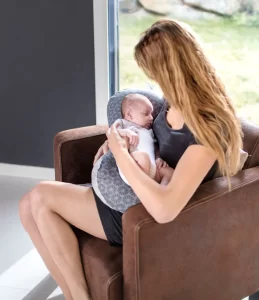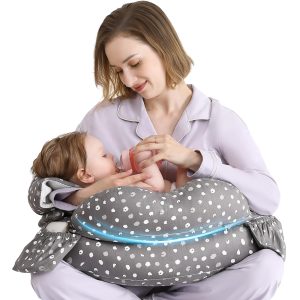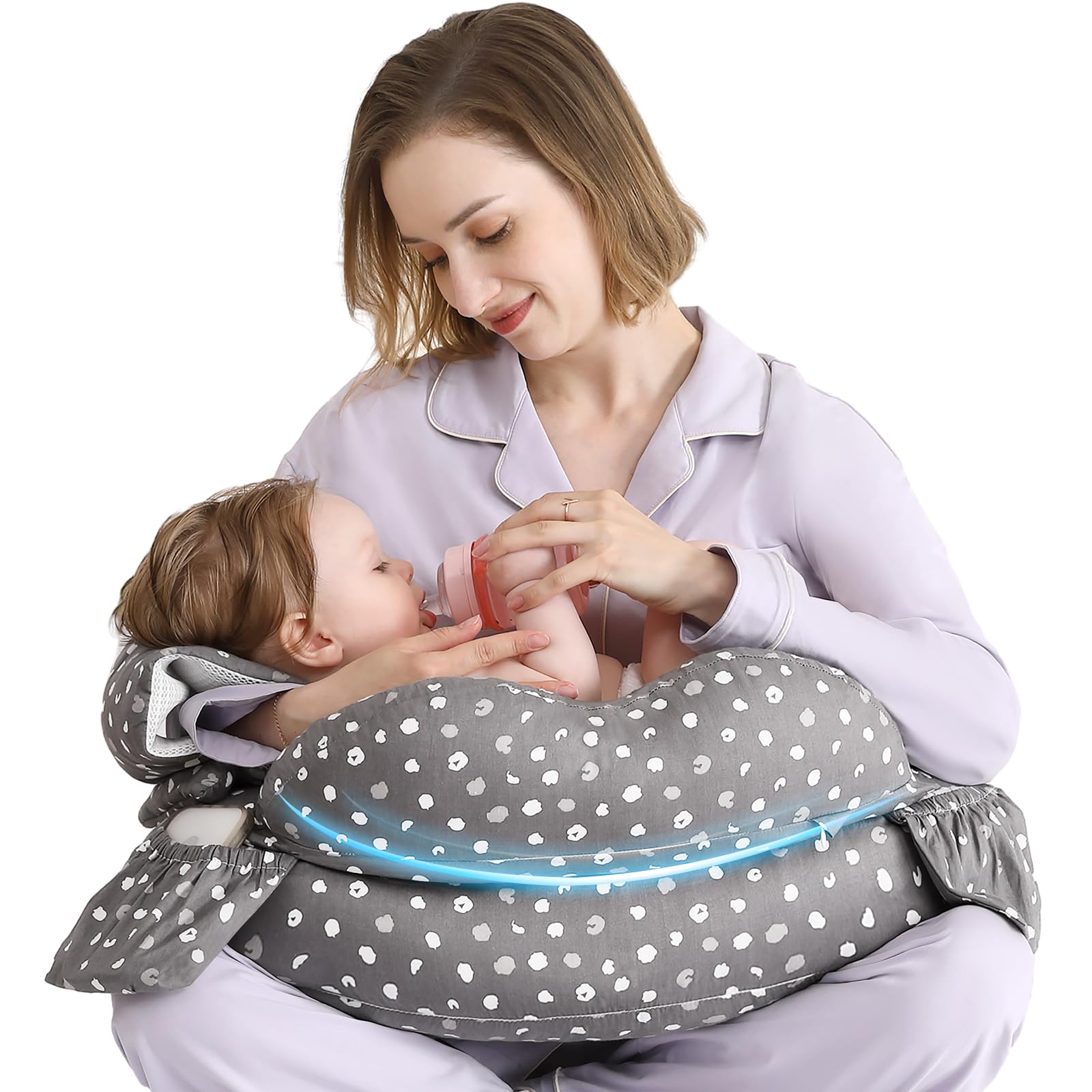Functions of a Nursing Pillow: Comfort or Controversy?
For expecting parents, navigating the world of baby products can be overwhelming. A nursing pillow is a common registry item, but what exactly does it do? This article explores the various functions of nursing pillows, weighing the potential benefits against safety considerations, and offering alternative solutions to ensure feeding comfort for mom and safety for baby.

What is a Nursing Pillow?
A nursing pillow is a specialized cushion designed to provide ergonomic support and comfort to caregivers during breastfeeding or bottle-feeding sessions. These pillows typically come in U-shaped or C-shaped forms, cradling the body of the caregiver and offering targeted support for specific areas.
Potential Functions of Nursing Pillows
While not essential for breastfeeding or bottle-feeding, nursing pillows can offer several functions aimed at improving comfort and ease during feeding sessions:
Improved Comfort for Mom:
-
The pillow can help alleviate strain on the arms, shoulders, and back, especially during extended nursing periods. This can be particularly helpful for mothers who are recovering from childbirth or experiencing discomfort.
Proper Positioning:
-
The pillow may help position the baby at an optimal latching angle for more efficient feeding. This can be beneficial for mothers who are struggling with breastfeeding difficulties. A well-positioned baby can latch more easily and effectively, leading to better milk transfer and fewer feeding challenges.
Support for Different Feeding Styles:
-
Some nursing pillows are designed to be adjustable, allowing mothers to find a comfortable position for various feeding styles, such as the cradle hold, cross-cradle hold, or football hold. These different holds can target specific needs, such as offering more support for a cesarean section incision or helping with babies who have trouble latching.
-
Postpartum Recovery: For mothers recovering from childbirth, the pillow can provide extra support and comfort while holding their baby close. This can be especially helpful for mothers who experience pain or discomfort after delivery.
Safety Concerns and Nursing Pillows
It’s important to note that the American Academy of Pediatrics (AAP) strongly recommends against using any pillows in a baby’s crib for the first year. This recommendation is based on safety concerns, including:
-
Increased Risk of SIDS (Sudden Infant Death Syndrome): Soft objects like pillows can increase the risk of SIDS by potentially obstructing a baby’s airway or causing them to re-breathe exhaled carbon dioxide.
-
Suffocation Risk: Newborns lack the head and neck control to easily move their heads if their airway becomes obstructed by a pillow.
-
Entrapment Risk: Loose bedding, including pillows, can pose an entrapment hazard. A baby could become entangled in the pillow or bedding, restricting their movement and breathing.
Therefore, using a nursing pillow for a baby’s sleep is not recommended due to these safety risks.
Using Nursing Pillows Safely During Feeding
While nursing pillows can be a helpful tool for feeding comfort, their use should be limited to supervised feeding sessions while the parent is awake and attending to the baby. Here are some safety tips to remember:
-
Never leave a baby unattended with a nursing pillow. A baby can easily roll over or become smothered by the pillow if left unsupervised.
-
Do not use the nursing pillow for co-sleeping or bed-sharing. Bed-sharing is a known risk factor for SIDS, and the presence of pillows in a co-sleeping situation further increases the dangers.
-
After feeding, always transfer the baby to a firm, crib mattress for safe sleep. A firm, flat mattress with a fitted sheet is the safest sleep surface for newborns.
Alternatives to Nursing Pillows for Feeding Comfort
There are several safe and effective alternatives to nursing pillows that can provide comfort during feeding sessions:
-
Regular pillows: A regular bed pillow can be used for limited support under your arm while feeding.
-
Rolled towels: A rolled towel placed strategically can offer some arm and back support.
-
Feeding cushions: These small, wedge-shaped cushions can provide targeted support for the baby’s head during feeding.
-
The Football Hold: This feeding position requires no additional equipment. Simply cradle your baby with your arm underneath their head and neck, mimicking the position they were in while in the womb. This can be particularly comfortable for mothers recovering from a cesarean section.
-
Proper Posture and Body Positioning: Sometimes, simply adjusting your own posture and body positioning can significantly improve feeding comfort. Experiment with sitting upright with good back support, propping your feet on a stool if needed, and ensuring your baby is positioned close to your body for optimal latching.
Remember: Regardless of the method you choose, comfort is key! Experiment and find what works best for you and your baby.
Conclusion: Finding Comfort and Prioritizing Safety
Nursing pillows can offer some functions aimed at improving comfort during feeding sessions, but a safe sleep environment is paramount for your newborn. The AAP’s recommendations against using pillows in a crib are for a valid reason. There are plenty of safe and effective alternatives to promote comfort during feeding and ensure safe sleep for your baby.
Here are some additional tips for finding comfort while feeding:
-
Use a Comfortable Nursing Bra: A well-fitting nursing bra can provide support and make latching easier.
-
Warm Compress: Applying a warm compress to your breasts before feeding can help with milk flow and ease discomfort.
-
Relaxation Techniques: Taking a few deep breaths or practicing some gentle stretches can help you feel more relaxed and comfortable during feeding sessions.
By exploring these safe alternatives, focusing on proper body positioning, and prioritizing your baby’s safe sleep environment, you can create a comfortable and nurturing feeding experience for both you and your baby. If you have any questions or concerns about using a nursing pillow or your baby’s feeding or sleep environment, always consult your pediatrician.
